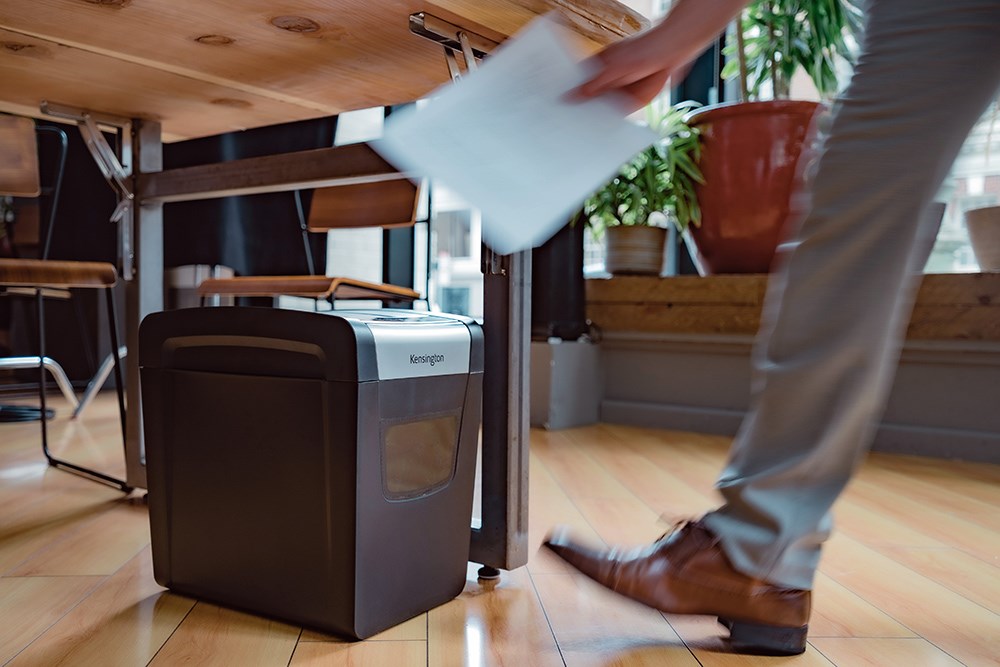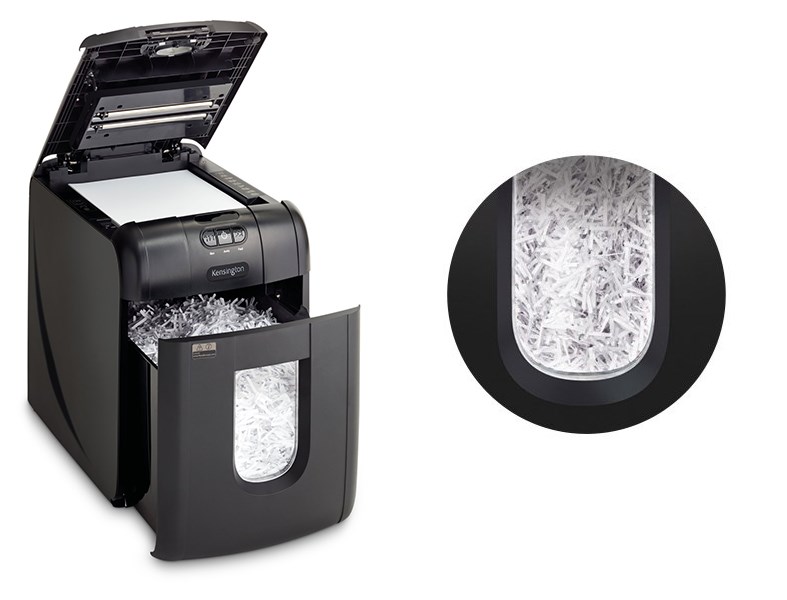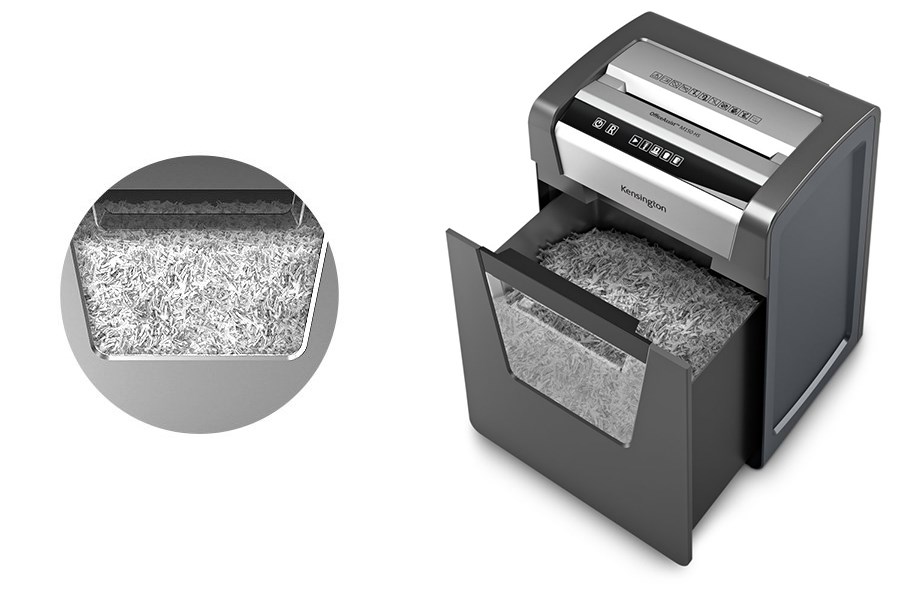
Are you doing everything possible to reduce the risk of data breaches?
When thinking about how to protect company information, cybersecurity best practices such as second-factor authentication or next-generation firewalls are usually top of mind. However, these measures should be pieces of a larger strategy, one that also has physical security components, including office shredders.
How office shredders strengthen data protection
Even in the age of ubiquitous digital information, paper records are far from passé. Mail and physical contracts, among other items, remain essential to many workflows and must be handled and disposed of with care. Left unsecured, these records can expose sensitive details such as protected health information, which is why it’s important to shred them and any other confidential documents as needed to render their contents indecipherable.
Office shredders ensure compliance with applicable regulations, help prevent identity theft and lessen the risk of a costly data breach. But how can you select the right shredder for your organization’s use case?
There are many criteria to consider with any office shredder. Let’s look at 10 questions to ask when evaluating your options.
1. What is its DIN 66399 security level and paper cut style?
Shredders are classified into different security levels, based on the size of the paper particles once a shredding operation is complete. Each level in the official DIN 66399 standard requires a minimum particle size and cut type.
DIN P-1 and P-2 specify strip cuts, P-3 and P-4 cross cuts and P-5, P-6 and P-7 micro cuts; particle sizes become progressively smaller as the security level number increases. All paper shredders fit into one of three categories based on those cut types: strip cut, cross cut and micro cut.
For safe disposal of confidential records containing sensitive information, it’s generally advised to use at least a P-3 shredder. Cross cut and micro cut office shredders generate much smaller particles than strip cut shredders, making it less practical for anyone to interpret or reconstruct the shredded document. For example, A P-3 shredder cuts an A4 piece of paper into approximately 312 particles, vs only 36 particles for a P-1 shredder.
The general cut level breakdown is as follows:
- Strip cut: Large particles, low security, levels P-1 and P-2
- Cross cut: Medium-sized particles, higher security, levels P-3 and P-4
- Micro cut: Small particles, highest security, levels P-5 through P-7

P-4 Cross Cut
The right selection of cut style will depend upon the security and compliance requirements of the office. For a home office, a relatively low security level may be sufficient since there likely aren’t any stringent regulations in place and the documents being handled probably won’t be prime targets of thieves attempting to reconstruct them.
In contrast, the higher security of a crosscut or micro cut shredder is necessary for businesses. Organizations can’t risk having readable documents fall into the wrong hands. A pivotal scene from the Oscar-winning film “Argo,” in which simple strip cut shredded intelligence photographs are carefully reassembled, shows the danger in this regard.

P-5 Micro Cut
According to the Ponemon Institute, the average breach costs almost $4 million and involves more than 25,000 compromised records. High-security office shredders can mitigate this risk by ensuring that paper records are systematically disposed of and not left exposed to prying eyes.
2. Does it have manual or auto feed?
Manual-feeding shredders require documents to be fed by hand in relatively small batches. In contrast, auto feeding models allow larger batches of paper to be inserted into a tray or compartment to be shredded without user assistance, freeing up the user’s time.
Security is not an issue if you choose an auto feed shredder with a security PIN locking feature, which allows a user to safely walk away while even a very large job is completed. A manual feeding shredder would require more hands-on attention.
3. What is its run time and cool down time?
Paper shredders are powerful machines and generate significant heat in the process of shredding documents. That heat limits how long they can run before needing to cool down, similar to how a PC needs a fan or heat sink or else it will shut down from overheating.
Office shredders have a wide range of possible run times and corresponding cool down periods. Simpler models may be able to continuously shred documents for fewer than 10 minutes before an extended break is required. On the other end of the spectrum, higher-performance, heavy duty shredders can run uninterrupted for hours.
While cutting documents into smaller particles to meet the requirements for high security levels like P-5 generates more heat, micro cut shredders don’t necessarily need longer cool downs than less intensive cross cut or strip cut machines. The run time and cool down time both depend on the technical specifications of the office shredder in question.
4. What is its sheet capacity?
A very basic paper shredder can handle only a few sheets at a time. This low capacity is fine if someone only needs to shred the occasional sensitive document from time to time and isn’t in need of bulk record disposal.
If an office does require more scalable shredding capacity, some shredders can load hundreds of sheets at a time. Kensington’s OfficeAssist Auto Feed A6000 Shredder can handle 600 sheets of paper in one pass, cross cutting them into P-4 particles while running for up to two hours continuously.
5. What is its bin capacity?
Regardless of how many sheets of paper it can handle at once or its run time or security level, an office shredder will eventually need to be emptied. Its shredded materials accumulate in a removable bin, with a capacity measured in gallons and/or sheets.
Larger bins mean less frequent emptying, saving time in offices in which high-volume shredding is a regular occurrence. Look for a shredder that includes indicator lights that conveniently show when it’s time to empty the bin.
6. What can it shred in addition to paper?
Paper is inevitably the medium most closely associated with shredding, but it’s not the only material that will need to be routinely destroyed in order to ensure comprehensive data security. Credit cards, optical discs (CDs, DVDs and Blu-ray Discs), glossy posters and brochures, and even mixed media junk mail contain information that shouldn’t be left out in the open.
Heavy-duty paper shredders can process these items just like paper. For example, they can reduce optical media to tiny plastic strips that wouldn’t be reconstructible or readable by any compatible player.
At the same time, they may also be able to take care of any staples and paper clips still attached to a paper document. That saves time, as documents can be fed as-is into the shredder without having to devote lots of time to removing tiny pieces of metal by hand.
7. What kind of anti-jam and preventative maintenance features does it offer?
Paper jams are a constant concern with shredders, as they can bring document destruction to a complete halt. Every office shredder will contain some features for preventing jams, but the implementation will vary between models.
The simplest anti-jam mechanism is a reverse button that helps push the paper in the opposite direction and clear any obstructions from the blades. More sophisticated shredders include automated technology that reverses the blades if the machine detects that too much paper is being inserted.
Such shredders may also perform blade reversals after completing each job. Combined with features such as self-lubrication to ensure smooth operation, this capability makes a shredder easier to maintain.
8. How noisy is it?
Shredders have the potential to be very noisy. That’s why it’s important to find a model with a relatively quiet motor that can run in an office environment without creating major distractions in the workplace. Kensington shredders operate under 65 decibels, which is the noise level of an average business office.
9. What safety features does it offer?
Office shredders must be operated with care, especially if children or pets are nearby. Built-in safety features can reduce risk. A shredder with a PIN can be locked until its current operation is complete, preventing anyone else from opening it and possibly cutting themselves.
10. How energy-efficient is it?
In-office appliances can consume significant amounts of electricity that may drive up overall operating costs and have significant environmental impact as well. Energy-efficient paper shredders can help curb power usage and promote eco-friendliness, through features that put them to sleep automatically when they’re not in use. Once someone needs to begin a job, the shredders then quickly reactivate to save time.
Where to start the office shredder purchasing process

In addition to the above criteria, cost is always a relevant consideration when evaluating different office shredder options. To serve offices of all sizes, Kensington offers shredders that fit into a wide variety of budgets and meet a full range of requirements for security, speed and capacity.
To get started, take a look at our current office shredder options. Have additional questions? Our team is also always available for live chat on our site to answer your questions about shredders and other products in real time.